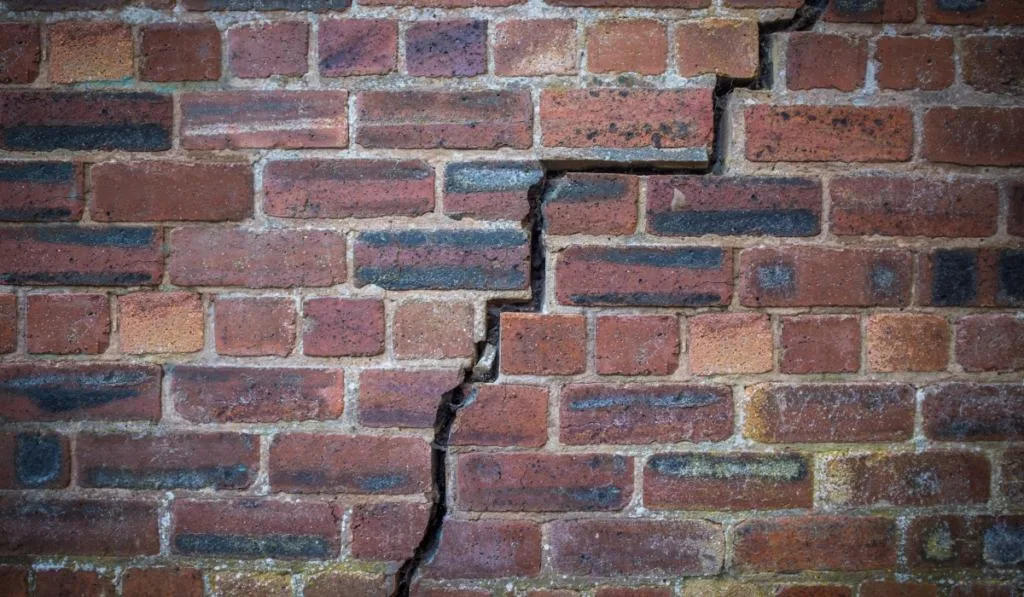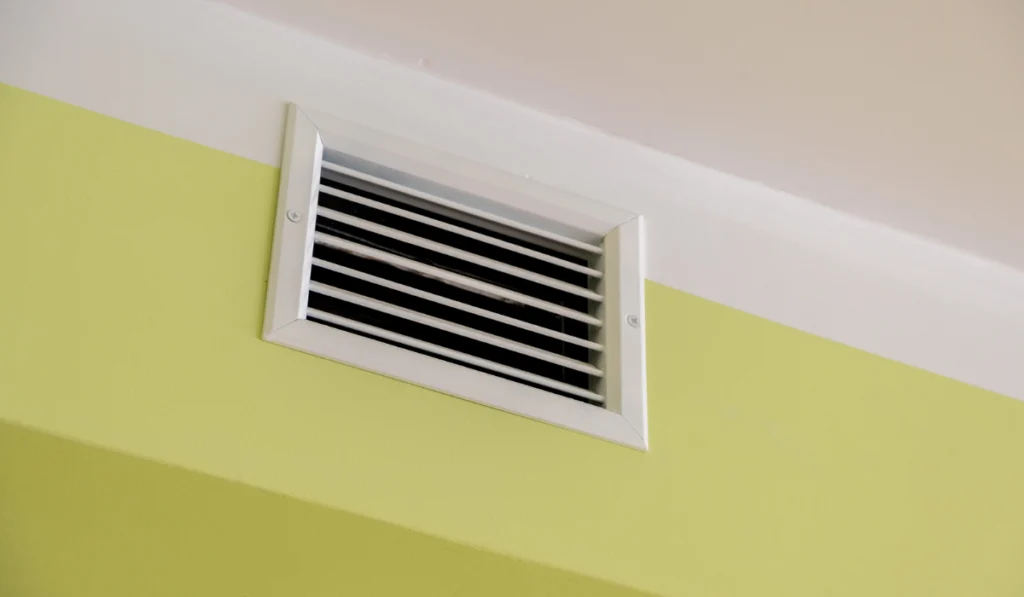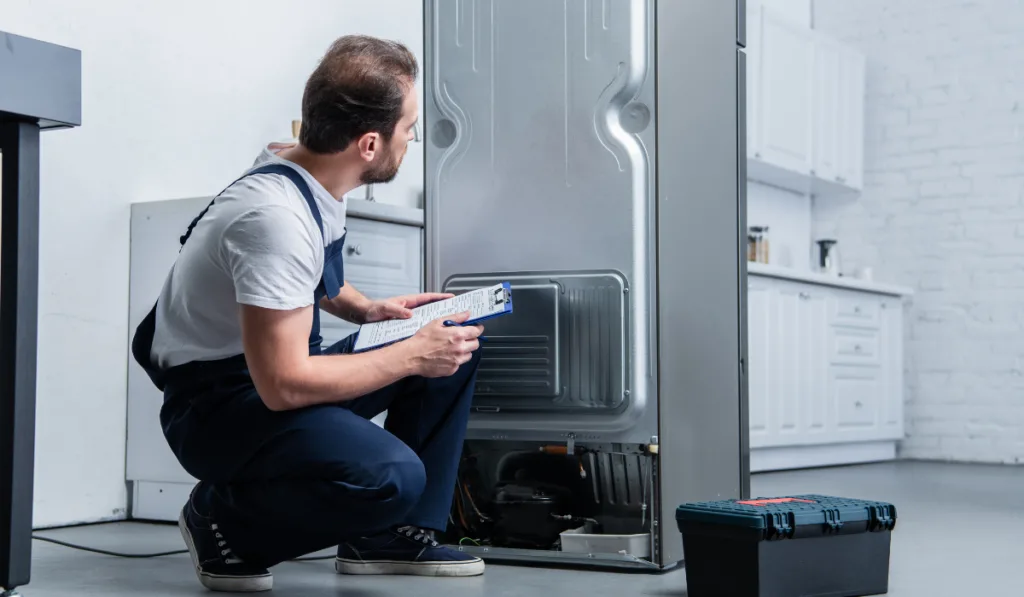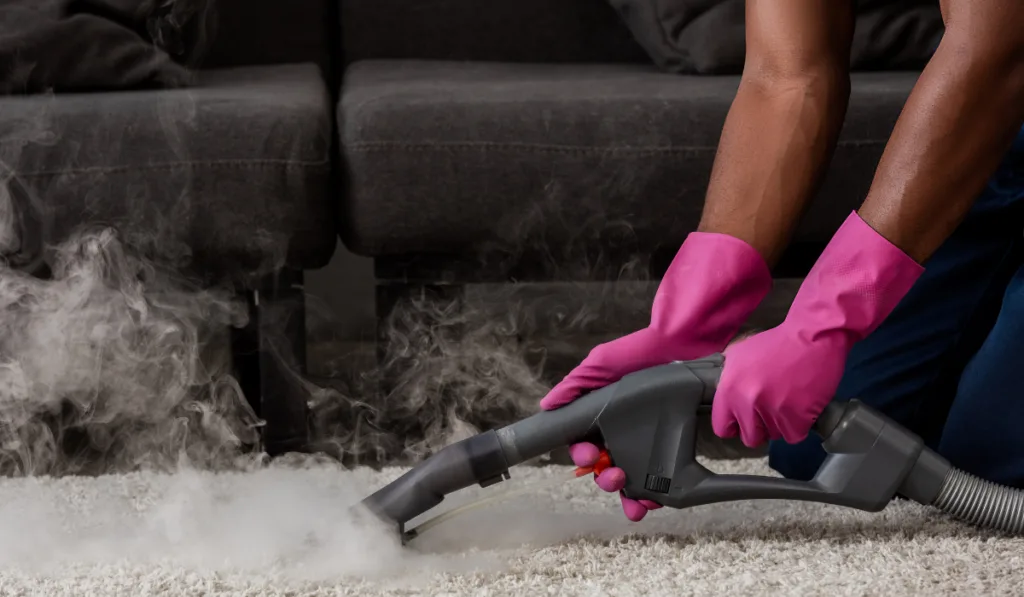*This post may have affiliate links, which means I may receive commissions if you choose to purchase through links I provide (at no extra cost to you). As an Amazon Associate, I earn from qualifying purchases. Please read my disclaimer for additional details.
Whether it’s in your living room, bedroom, or even all over your house, having carpet as a floor covering can add beauty and style to your interior design. More importantly, having carpets to cover the floor can prevent people from slipping, which is especially helpful in rooms with large furniture or fragile decorations.
Like most home décor, carpets are prone to damage, wear and tear, and other issues. But the biggest problem that you want to avoid when having carpets is a wet surface.
Sometimes, you will notice that your carpets feel inexplicably damp. And you might be wondering, how did that happen? Why is your carpet wet for no reason?
There are many causes as to why your carpet is wet. For instance:
Table of Contents
Broken Plumbing Pipes
This is what would first come to everyone’s mind. If your carpet feels damp or wet, you might have to check for any burst pipes.
Broken pipes don’t just happen overnight. It takes time for rust to build up. Bit by bit, corrosion happens, and then the metal pipes eventually crack. However, if the pipes are made from PVC (polyvinyl chloride), they rarely corrode. But that doesn’t mean that they are fully reliable.
Sometimes, leakage can happen if the PVC pipes are broken, or water may seep through holes or cracks on damaged PVC pipes.
If the carpet is on the ground floor and your house is built on a solid concrete slab, then you can rule out any possibilities of broken pipes. If your home is built on floorboards or a very old concrete foundation, then there is a possibility that burst pipes might have caused the issue.

Structural Defects
If there is a crack in the pebbledash or defects in the brickwork or concrete beams, then water may enter from the outside or from underground and make your carpets wet.
Two situations can happen: penetrating damp or rising damp.
Penetrating Damp
If your carpets are wet only on the edges, then the water source might come from outside. But once you have found the cause, hire a plumber or private contractor to solve this issue.
Rising Damp
If the wet spots only occur at the center of your carpet or in the middle area of the room, then it could be rising damp and more investigation has to be carried out. You can hire a damp proofing expert to locate the source of the leak for rising dampness.
Depending on your floor plan, water in the middle of the carpet could also happen because of leaking radiators or structural defects in the kitchen or bathroom.
Clogged Gutters
Poor drainage and clogged gutters are other causes of wet spots on carpets. When the gutters around your house or on the roof are clogged with debris and hard, solid materials, there is no more space for water to move to, especially during heavy rain.
Hence, the water will overflow and run down the sides of your house.
Cracked or broken gutters can also cause leakage that might seem too small to notice. But over time, the leakage can worsen if you don’t repair or replace the gutters.
Wet spots resulting from clogged or damaged gutters can easily be seen on the edges of the carpets. Watermarks may also be present on the walls near the wet edges of the carpets.

Rainwater and Snowfall
Rain and melting snow can make your carpets wet, especially if you have leaks in the roof, ceiling, or windows. To combat this issue, you have to be pretty vigilant and look for any signs of moisture formation on the ceilings and windows.
You can use waterproof paint on your roof to prevent water leaks and apply waterproof sealant on every leaky spot around the ceilings and windows.
Be sure to close your windows and doors tightly during heavy rain. This is because when your house is properly closed, strong wind can’t blow water and snow inside of your house.
If you have a basement, don’t forget to check the insulation for any seepage or leakage of water from beneath the house during wet seasons.
Pet Issues
Having a pet is one of the most enjoyable things that you can have. However, when you have cats or dogs, they also tend to do what animals do, which is urinating and vomiting.
Unlike rainwater, you can smell cat urine from afar. But dog urine doesn’t smell as strong as the bodily discharge from your favorite feline. Hence, if you have dogs, you will have to get closer to the carpets and smell them.
To combat these issues, you can train your pets to urinate in their litter box or outside and let them repeat this routine for a while. Meanwhile, watery vomit is easy to spot, and you should clean the affected areas quickly to avoid mold buildup that leads to other severe issues.

Old Spillages
If your pets are properly trained, and there’s no way that they will urinate on your carpets, then a human error could be another cause for concern.
Your family or housemates might have spilled something when you’re not around. Or you might have accidentally sloshed liquid from cups or dishes when moving from one room to another. So, you should ask them if they have spilled anything in that particular area.
Oftentimes, a spill might not smell or be visible to our naked eyes when the moisture has been absorbed by the fabric, and it could stay inside and underneath your carpets for quite a long time.
Improper Cleaning
Cleaning your carpets every once in a while is good to remove dirt, stains, and bad odors that have built up on these fabrics. However, it isn’t as easy as washing your clothes. This is because some carpets are made from different layers that require extra care.
If you use liquid or chemicals that aren’t suitable for the carpets, it can cause them to be soapy or extra wet for a longer period of time. It might also take some time for the carpets to dry due to the moisture that still exists inside the fabric.

Poor Airflow
Without proper ventilation and airflow inside every room of your house, moisture and odor can build-up due to the lack of dry, fresh air. When the humidity is high, your carpets are prone to trap more moisture.
Over time, damp or wet spots may appear all over your carpets. To combat this issue, install a dehumidifier to remove excess moisture in the air. You can also open the windows and door from time to time for better airflow.
Growth of Mold and Mildew
Mold and mildew are caused by excess moisture and water in the environment. Poor airflow and lack of dry atmosphere are some of the biggest factors that can cause mold to grow underneath your carpets.
As they grow and spread, these fungi can trap more water and cause your carpets to become wet. Carpets with mold will also smell bad.
Oftentimes, you will have to throw these carpets away because these fungi have already penetrated the fabric. Even if you manage to clean and remove the mold, there is a chance that these fungi still live inside the fabric, and they can grow again.

Broken Appliances
Broken home appliances that use water can also cause wet spots on your carpet.
In fact, appliances such as dishwashers, washing machines, boilers, and air conditioners use small pipes that run down the walls and underneath the floor. When these pipes are hidden, it is more likely for you to ignore them until you notice obvious wet spots or pools of water on the floor.
If you’re using appliances that require heavy use of water, be sure to monitor them frequently, and look for any signs of broken hoses, leakage, and cracks. You should also do a monthly cleaning on your air conditioner to remove any dirt on the filter that leads to the buildup of moisture and heavy condensation.
Flat Roofs
Not all roofs are created equally, and some come with their own disadvantages. For instance, flat roofs are popular in houses with modern designs. However, this type of roof can invite danger to your carpet, especially during rainy seasons or if you’re living in a region with a long period of rainfall.
Flat roofs can accumulate and pool more water. Over time, it can seep through the ceiling and run down the walls, reaching the floor and making your carpets wet.

How To Deal With Wet Carpets
In most cases, as long as the wet spots are detected early and the water hasn’t completely soaked your carpets, you can deal with the issue. Here are some things that you can do.
Fix the Cause of Water Leaks
Once you have located the source for this issue, damage control should be the first thing on your to-do list. If possible, shut the main water source down until any broken hoses, burst pipes, or broken appliances have been repaired and replaced with new ones.
The longer you wait, the harder it will be for you to save the carpet.
Dry Out Your Wet Carpets
It is important for you to dry out your wet carpets quickly before molds or mildew can grow around the wet spots. Use a high-pressurized vacuum to get rid of any remaining moisture left inside the fabric. You can also turn on a dehumidifier or open all the windows to let fresh air in.
If the weather is sunny and hot and you have removable carpets, you can place your carpets outside and let them dry quickly.
Sanitize the Carpets

Once you have dried out the carpets, it is time to sanitize your carpets. Most of the bad smell that comes from wet carpets is caused by molds and mildew. Hence, to avoid these fungi from growing in and underneath the carpets, you should sanitize your carpets.
Use a steam cleaner to kill these fungi or any bacteria that might exist inside the fabric. If your carpets are wet due to animal urine or floodwater, then those things can potentially carry a lot of harmful bacteria that can live inside the carpets.
Hire a Professional Carpet Cleaner
If you still think that the carpets aren’t really clean and properly sanitized, then you should reach out to a professional carpet cleaner to get their service.
Most carpet cleaners will use hot water extraction to clean your fabrics. This is where they use highly pressurized hot water that can penetrate the carpets and eradicate all the dirt and bacteria inside the carpet fibers.
Final Thoughts
Depending on the type of carpet, it might be easy or hard for you to tell whether it is wet or not. If you have thick carpets, you won’t easily see or feel any dampness or wet spots on the upper surface. At a glance, they might seem dry, but water may have been absorbed by the fabric. Over time, this will create an environment for bacteria or molds to grow. Then, you will smell a foul odor coming from your carpets. Hence, it is always wise to check the condition of your carpets every once in a while to prevent major damage that can put a dent in your pocket.
Citations
- https://nextmodernhome.com/why-are-there-random-wet-spots-on-my-carpet/
- https://www.rapidplumbingsd.com/why-does-my-carpet-feel-damp/
- https://applianceanalysts.com/carpet-wet-in-places/
- https://www.boascleaningservices.com.au/here-are-the-most-common-reasons-for-carpet-water-damage/
- https://www.waterdamageplus.com/carpet/carpet-wet-but-no-leak/
- https://thedampbuster.com/why-is-it-wet-under-my-carpet/
- https://www.linkedin.com/pulse/four-top-causes-carpet-water-damage-dennis-shy?articleId=7711329088533291771
